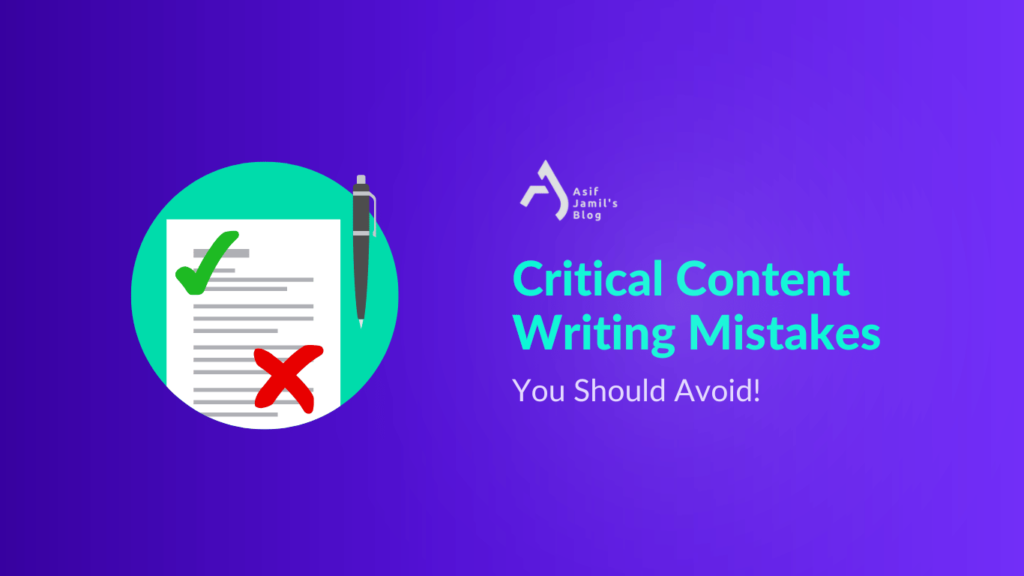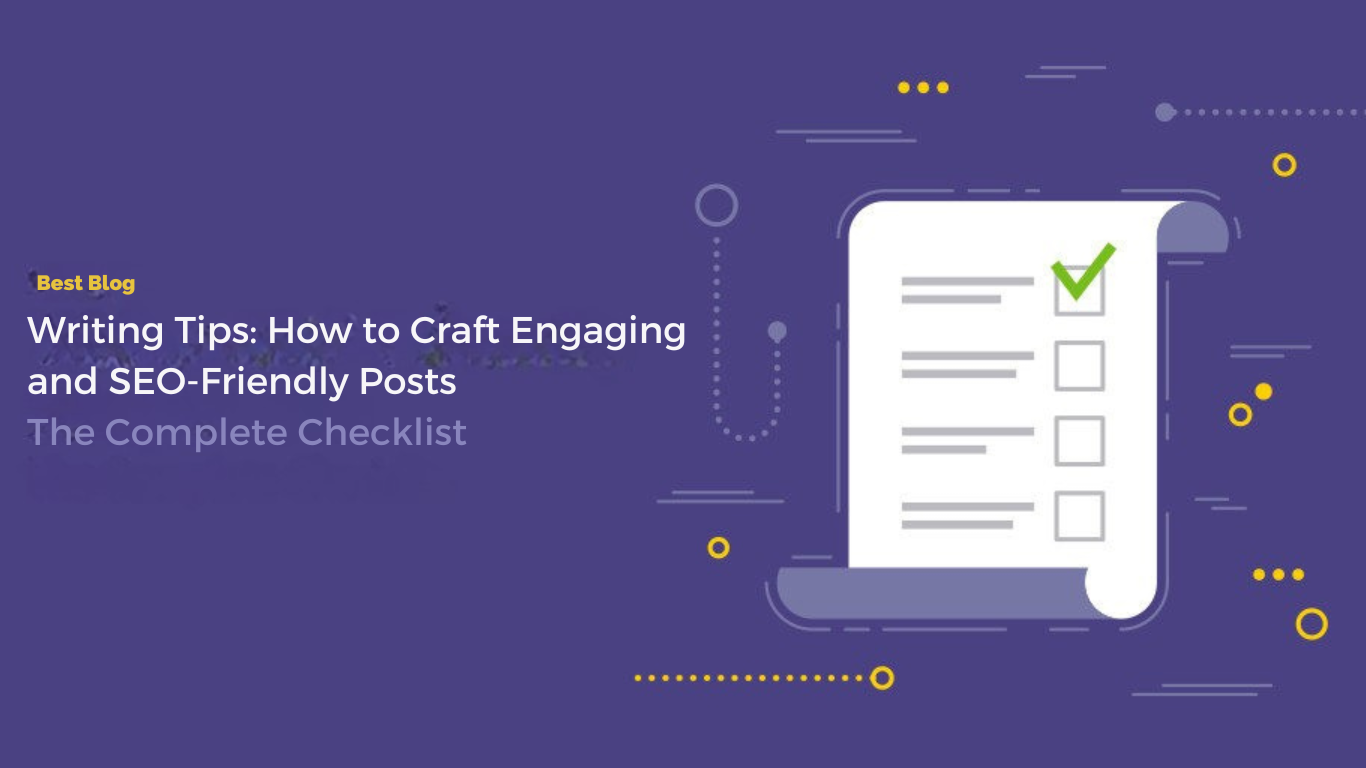Everyone has their opinion these days. It’s why blogging has become a popular pastime for many. Some do it on a casual basis, while others post religiously. But how do you make your blog from boring to one of a kind?
That’s through making small efforts like practicing daily while ensuring you stay on top of the emerging trends. If you need first aid with writing your very own personal blog, then you could hire a blog writing professional, however you have the option to do it yourself.
This blog will take you through everything you need to know, from understanding what a blog truly is to avoiding common mistakes and nailing SEO-friendly techniques.
So, grab your favorite notebook (or just your laptop) and get ready to level up your writing game. With these best blog writing tips, you’ll not only learn how to write engaging, impactful posts but also how to ensure your content gets the attention it deserves. Let’s dive in!
What is a Blog?
Before we talk about the writing process, let’s take a minute to understand what blogs are really about. Think of it like your very own little corner of the internet. It’s where you get to share your thoughts, knowledge, and expertise with the world. Or consider it your online journal that you can share with the rest of the world. Whether you’re sharing your passion for baking, tech reviews, or even communicating the best blog writing tips, blogs are all about connecting with readers in a meaningful way.
At its core, a blog is made up of individual entries called posts. These posts are usually arranged in reverse chronological order, meaning the newest content sits right at the top. Blogs can be personal, professional, or even niche-specific, depending on who you’re trying to reach and what you want to say. The beauty of blogging lies in its versatility—it’s a space where you can educate, entertain, inspire, or even market your skills. It’s not something that is set in stone. Blogs are all about letting yourself shine.
The Anatomy of a Blog Post
A blog doesn’t just happen because you merged some words or sentences together (if that wasn’t your intention). To truly make an impact, especially with SEO-friendly blog writing, you’ll need structure. A standard blog post typically includes the following:
- Headline: The attention-grabber. This is what makes readers want to click (or scroll past).
- Introduction: The hook where you explain why your post matters. It’s your chance to reel readers in and give them a reason to stay.
- Body: This is where the magic happens. Well-structured content with subheadings, bullet points, and visuals keeps your readers engaged and prevents them from zoning out.
- Conclusion: Wrap things up with a summary or call to action. Tell your audience what they should do next.
- Meta Information: This includes the title tag and meta description, which are crucial for search engines and a key part of content writing strategies.
Why Are Blogs So Powerful?

Sure, blogs are a great way to voice your opinion about why putting pizza over a pineapple is great, but it’s not the only use for writing. Apart from being a creative outlet, they’re a tool for connection, growth, and influence.
Businesses use blogs to showcase expertise, drive traffic, and build relationships with their audience. Writers and creators use them to share their unique perspectives and cultivate a loyal following. For beginners, learning how to write engaging blogs is one of the smartest ways to carve out a space for yourself online. If you do it long enough, you’ll be remembered as an industry professional, and people will consider trusting you.
And here’s the kicker: blogs thrive when they’re optimized for search engines. Good blogging doesn’t just appeal to readers; it attracts search engines, too. Crafting content that’s both user-friendly and keyword-rich—without being spammy—is how you win the long game.
In short, a blog is more than words on a screen. It’s your way of building trust, sharing value, and establishing your presence online. Whether you’re here to entertain, inform, or sell, a well-crafted blog post can do it all. So, ready to dive into the world of blogging? Keep reading—you’re about to learn the best blog writing tips that’ll set your content apart.
The 9 Steps to Complete Your Blog from Start to Finish

Just knowing what a blog is and how it’s structured won’t really help you get the writing process done. If you want to write a post that actually reaches your audience, follow these nine steps, and you’ll have one ready to share with the world faster than you think:
Step 1: Nail Down Your Topic
Before you even think about typing, get crystal clear on your topic. What problem are you solving? Who are you writing for? Is it to share the best blog writing tips, or maybe you want to talk about automotive repair fixes as your niche topic? Your blog should serve a purpose.
Bonus Tip: keep a running list of ideas so you’re never stuck staring at a blank page.
Step 2: Research Like a Pro
Even if you’re an expert, solid research gives your blog credibility. Dive into industry trends, gather relevant data, and check out what your competitors are saying (but no copying, okay?). If your blog is packed with insights, readers will see you as a go-to source. To get the basics of research, consider asking the 5Ws and 1H for every topic (Who, What, Where, Why, When and How). The more you dig into the topic for information, the better the blog will come out.
Step 3: Outline Your Post
Here’s where you start to see the magic take shape. Create an outline to structure your thoughts. Divide your post into sections—introduction, body, conclusion—and jot down what you’ll cover in each. Think of this step as building the skeleton for your blog.
Step 4: Write Your First Draft
Now it’s time to write. Don’t aim for perfection—just get the words out. Let your ideas flow naturally and save the editing for later. Remember, the goal is to write content that speaks directly to your audience.
Step 5: Edit What You Wrote
No one expects you to write a masterpiece on the first try. Here’s where you refine your blog until it shines. Cut out the fluff, fix grammar mistakes, and polish your sentences. This is also the perfect time to make sure your tone matches your audience-friendly, engaging, and easy to read.
Step 6: Optimize for SEO
This step is crucial for SEO-friendly blog writing. Add your primary and secondary keywords (like content writing strategies) naturally throughout the post. Pay attention to your meta title, meta description, headers, and image alt text. But remember: write for humans first, search engines second.
Step 7: Add Visuals
A picture is worth a thousand words, and your blog is no exception. Include relevant images, infographics, or videos to break up the text and keep readers engaged. Visuals don’t just look pretty—they also improve readability and help explain complex ideas.
Step 8: Format for Readability
Huge walls of text? Hard pass. Break your content into small paragraphs, use subheadings, and throw in bullet points where it makes sense. This helps readers (and search engines) navigate your post effortlessly.
Step 9: Publish and Promote
Finally, the moment you’ve been waiting for—hitting that “Publish” button! But don’t stop there. Share your blog on social media, send it to your email list, and even consider repurposing it into bite-sized content for other platforms. The more eyes on your blog, the better.
The 10 Best Blog Writing Tips to Get It the Attraction It Deserves

Blog writing doesn’t just end with the writing process. You also need to understand the ways that you can make it better. It’s crucial because you want your blogs to be worth your audience’s attention. If not, sadly, no one would bother to read it. That’s where strategy comes in. These best blog writing tips will help your content shine and ensure it gets the recognition it deserves.
1. Know Your Audience Inside and Out
If you want your blog to connect, you need to understand who you’re talking to. Are your readers beginners looking for blog writing tips for beginners, or are they seasoned professionals seeking advanced strategies? Tailor your tone, language, and examples to their level of expertise.
2. Write a Killer Headline
Your headline is the first (and sometimes only) thing readers see. Make it count! Use power words, ask intriguing questions, or hint at solving a problem. For example, instead of “Tips for Blogging,” try “10 Game-Changing Blog Writing Tips for Instant Success.”
3. Hook Them With Your Introduction
The first few sentences of your blog should grab attention and make readers curious. Start with a surprising stat, a relatable story, or a bold statement. A compelling introduction sets the tone for the entire post and keeps readers scrolling. The more out of the box you make it, the more chances readers will give your blog a chance.
4. Inject Your Personality
Nobody wants to read a dry, robotic blog. Add a touch of your personality—whether it’s humor, a conversational tone, or a unique perspective. This makes your content relatable and keeps readers coming back for more. Do you have a catchphrase? Maybe you add puns while writing or use specific words more than often. Don’t think of them as flaws. Let them come out.
5. Use Storytelling to Your Advantage
Stories captivate people—they’re hardwired into our brains. Use storytelling to illustrate your points and make your blog more memorable. A personal anecdote or a real-life example can turn a bland topic into something engaging.
6. Focus on Readability
Even the best content won’t succeed if it’s hard to read. Use short sentences, simple language, and plenty of white space. Tools like Hemingway or Grammarly can help ensure your writing flows smoothly. Readability is a key factor in how to write engaging blogs.
7. Include Data and Examples
Backing up your claims with statistics, case studies, or examples adds credibility. It also makes your blog more valuable to readers who want actionable insights. For instance, if you’re discussing SEO-friendly blog writing, include data on how optimized posts rank better.
8. End With a Strong Call to Action
Don’t leave your readers hanging—tell them what to do next. Whether it’s subscribing to your newsletter, leaving a comment, or checking out a related post, a clear call to action keeps readers engaged beyond the last sentence.
9. Keep Updating Your Content
Blogging isn’t a one-and-done deal. Over time, information changes, and your content can become outdated. Regularly updating your blogs ensures they stay relevant and continue to attract traffic. Plus, it signals to search engines that your site is active.
10. Proofread Like a Pro
Even the most engaging blog will fall flat if it’s riddled with typos and errors. Proofread your work (twice!), or better yet, get a fresh pair of eyes to review it. Clean, polished content reflects your professionalism.
Mistakes you Want to Avoid While SEO-Friendly Blog Writing

You’ve got the strategies to create an engaging blog, but even the most skilled writers can stumble into common pitfalls. The good news? You can dodge these landmines with a little foresight. Here are eight mistakes you’ll want to avoid while working on SEO-friendly blog writing—because nothing should stand between you and a great blog post.
1. Keyword Stuffing
Let’s get this out of the way: keywords are important, but overusing them? Not so much. If your blog reads like this: “For the best blog writing tips, use these best blog writing tips for the best blog writing tips…” you’ve gone too far. Search engines are smarter than you think, and this outdated tactic will hurt your rankings. Instead, use keywords naturally and sparingly.
2. Writing Without a Clear Focus
Ever read a blog that felt like a rambling monologue? That’s what happens when you don’t stick to one central theme. Every blog post should have a clear purpose. Stay focused, and resist the urge to wander off-topic.
3. Ignoring Your Audience’s Intent
If you’re writing without considering what your audience wants, you’re wasting your time. Are they searching for practical tips? Deep insights? A mix of both? Align your content with their search intent, or you’ll risk losing them to another blog that does.
4. Forgetting About Mobile Users
With so many people reading blogs on their phones, a desktop-only layout is a big no-no. Failing to optimize your blog for mobile devices not only frustrates readers but also hurts your SEO. Use responsive design and test your posts on different devices to make sure your content looks great everywhere.
5. Skipping Meta Information
Your blog could be a masterpiece, but if your meta title and description are sloppy—or missing altogether—it won’t get the clicks it deserves. These little snippets are your first impression in search results, so make them catchy, relevant, and packed with value.
6. Overloading on Dense Paragraphs
Huge blocks of text are a surefire way to scare off readers. People skim blogs, so if you’re not breaking up your content with subheadings, bullet points, or visuals, you’re making it harder for readers to engage. Keep it skimmable—it’s a cornerstone of content writing strategies.
7. Neglecting Internal and External Links
Links aren’t just for adding depth to your content—they’re essential for SEO. Forgetting to include internal links to your other blog posts or external links to credible sources is a missed opportunity. Links guide readers, build trust, and help search engines understand your content better.
8. Publishing Without Proofreading
We’ve all done it: hit “Publish” and noticed a typo seconds later. Mistakes happen, but too many can damage your credibility. Always proofread your post (twice!) and use tools like Grammarly to catch errors. Clean content builds trust with readers and shows you care about quality.
Final Note
Blogging is more than just stringing words together—it’s about delivering value, building connections, and staying relevant in an ever-changing digital landscape. By following the best blog writing tips covered in this post, you’re setting yourself up for success. Whether it’s understanding your audience, avoiding common mistakes, or optimizing for SEO, every small effort adds up to creating impactful content.
So, what are you waiting for? Go ahead and apply these tips to your next post—you’ve got this!
FAQs – Frequently Asked Questions
Q1: What are the best blog writing tips for beginners?
A: Start with a clear goal and a structured outline. Focus on understanding your audience, use simple and engaging language, and don’t forget to optimize your post for SEO. Small steps lead to big results!
Q2: How do I make my blog SEO-friendly?
A: Use relevant keywords naturally, optimize your meta title and description, and structure your blog with headings, subheadings, and visuals. Always write for humans first and search engines second.
Q3: What mistakes should I avoid in blog writing?
A: Avoid keyword stuffing, writing without a clear focus, ignoring your audience’s intent, and publishing without proofreading. These small errors can significantly impact your blog’s performance.
Q4: How often should I publish a blog?
A: It depends on your goals and resources. Consistency matters more than frequency. Start with one post per week and adjust as you grow comfortable with the process.
Q5: Do I need to be an expert to write a blog?
A: Not at all! Blogs are a great way to share your learning journey. Just ensure your content is well-researched, authentic, and valuable to your audience.
Q6: Can blogging really help my business or brand?
A: Absolutely! Blogging builds trust, drives traffic, and establishes your authority in your niche. Plus, it’s a great way to connect with your audience on a deeper level.

